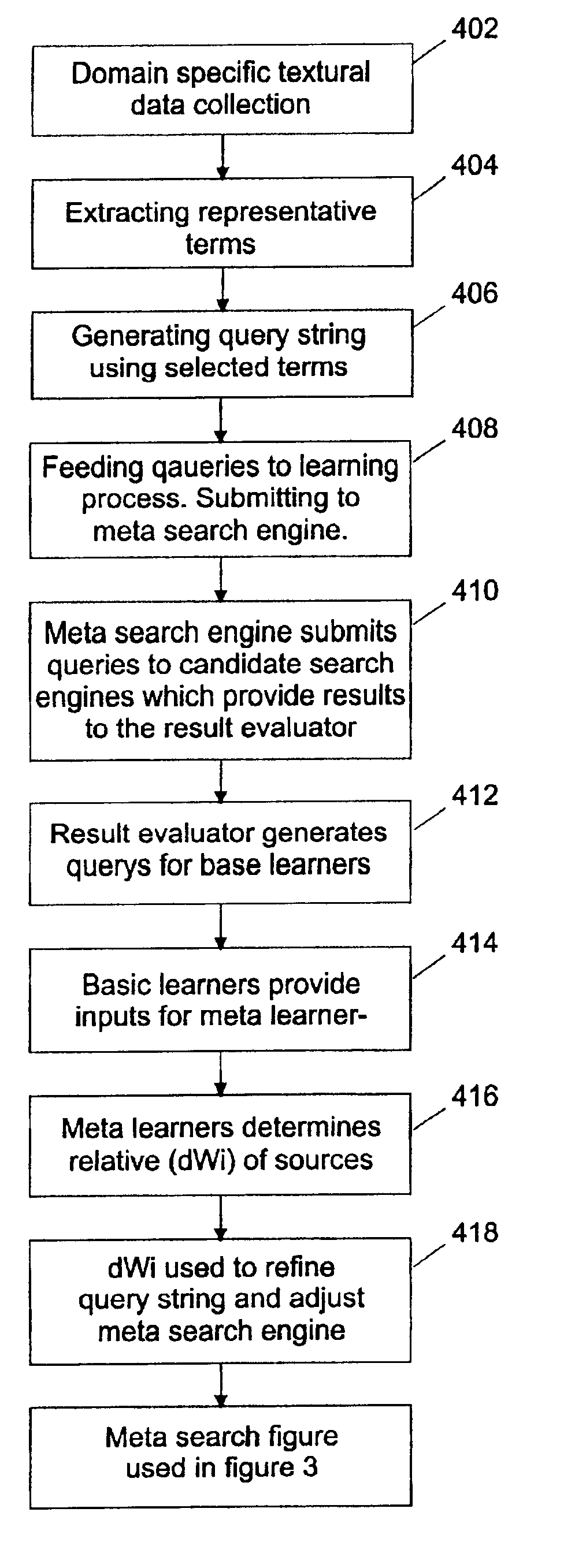Query routing based on feature learning of data sources
a data source and query routing technology, applied in the field of database searches, can solve the problems of search engine results not being completely acceptable, information overload for users, and inability to obtain varying results,
- Summary
- Abstract
- Description
- Claims
- Application Information
AI Technical Summary
Benefits of technology
Problems solved by technology
Method used
Image
Examples
Embodiment Construction
[0017]Referring now to FIG. 1, communication between a plurality of user computers 100a to n and a plurality of information servers 102a to 102n is accomplished via an on-line service through a wide area network such as the Internet 104 that includes network node servers. The network node servers manage network traffic such as the communications between any given user's computer and information server.
[0018]The computers 100 are equipped with communications software, including a WWW browser such as the Netscape browser of Netscape Communications Corporation, that allows a shopper to connect and use on-line shopping services via the Internet. The software on a user's computer 100 manages the display of information received from the servers to the user and communicates the user's actions back to the appropriate information servers 102 so that additional display information may be presented to the user or the information acted on. The connections 106 to the network nodes of the Interne...
PUM
 Login to View More
Login to View More Abstract
Description
Claims
Application Information
 Login to View More
Login to View More - R&D
- Intellectual Property
- Life Sciences
- Materials
- Tech Scout
- Unparalleled Data Quality
- Higher Quality Content
- 60% Fewer Hallucinations
Browse by: Latest US Patents, China's latest patents, Technical Efficacy Thesaurus, Application Domain, Technology Topic, Popular Technical Reports.
© 2025 PatSnap. All rights reserved.Legal|Privacy policy|Modern Slavery Act Transparency Statement|Sitemap|About US| Contact US: help@patsnap.com



